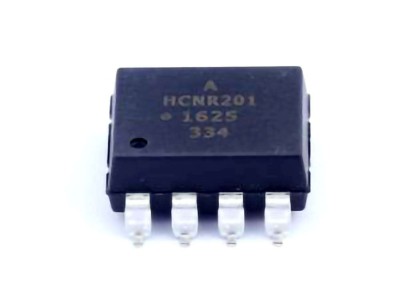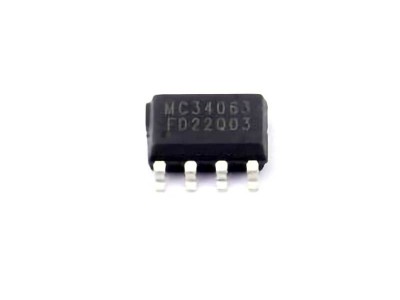
Understanding the 1N4007 Rectifier Diode
In the world of electronics, diodes play a crucial role in directing current flow, making them indispensable in Power rectifier circuits. Among the various diodes used for rectification, the 1N4007 is one of the most popular and widely used models. With its robust characteristics and reliable performance, the 1N4007 is a favored choice for both novice and experienced engineers. This part of the article will explore the fundamental features of the 1N4007 diode and explain its key characteristics.
1. What is a Rectifier Diode?
A rectifier diode is a semiconductor device designed to convert alternating current (AC) to direct current (DC), a process known as rectification. Unlike regular diodes, rectifier diodes are specifically built to handle the high current and voltage that comes with power applications.
Rectifier diodes are used in power supplies, Battery Chargers , and various other applications that require the conversion of AC power into usable DC power. They are essential for transforming energy from the grid into a form that can be used by electronics and electrical devices.
2. Introduction to the 1N4007 Diode
The 1N4007 is a part of the 1N400x family of rectifier diodes, which are known for their durability and versatility. Designed for high-voltage rectification, the 1N4007 can handle peak repetitive reverse voltages (PRRV) up to 1000V, making it suitable for a wide range of applications, from low-power electronics to heavy-duty industrial equipment.
Key characteristics of the 1N4007 diode include:
Peak Reverse Voltage (PRRV): 1000V
Forward Current Rating: 1A
Forward Voltage Drop (Vf): 1.1V to 1.3V (at 1A)
Maximum Reverse Current (IR): 5µA at 1000V
Operating Temperature Range: -55°C to +150°C
The 1N4007 is also favored for its availability in a standard DO-41 package, making it easy to incorporate into various designs and circuits.
3. Key Characteristics of the 1N4007 Diode
To understand why the 1N4007 is such a popular choice for power rectification, it’s essential to consider its key characteristics:
a. Peak Reverse Voltage (PRRV)
The PRRV refers to the maximum reverse voltage a diode can withstand without breaking down. For the 1N4007, the PRRV is a substantial 1000V, which is more than adequate for most general-purpose power rectification applications. This high reverse voltage capability ensures that the 1N4007 can be used in circuits with varying AC input voltages without risk of diode failure.
b. Forward Current Rating (IF)
The forward current rating indicates the maximum continuous current that can flow through the diode when it is forward biased. The 1N4007 is rated for a maximum forward current of 1A, which is sufficient for most low to medium-power applications. This makes the 1N4007 an ideal choice for powering small electronics, battery chargers, and low-voltage power supplies.
c. Forward Voltage Drop (Vf)
When a diode is forward biased (i.e., conducting current), it introduces a voltage drop in the circuit. For the 1N4007, the forward voltage drop typically ranges between 1.1V and 1.3V at 1A of forward current. While this voltage drop is relatively high compared to other types of diodes, it is still acceptable for most power rectification tasks. It’s important to note that a higher voltage drop may lead to energy loss in the form of heat, especially when operating at higher currents.
d. Reverse Recovery Time (trr)
The reverse recovery time is the time it takes for the diode to switch off when the applied voltage changes from forward bias to reverse bias. The 1N4007 has a relatively slower reverse recovery time compared to more specialized high-speed diodes, making it less suited for high-frequency switching applications. However, for low to medium-frequency applications, the 1N4007’s reverse recovery time is generally acceptable.
e. Thermal Stability
The 1N4007 diode has a wide operating temperature range of -55°C to +150°C, making it suitable for use in various environments, from consumer electronics to industrial applications. Its thermal stability is essential for ensuring consistent performance, particularly in high-power or high-temperature environments.
4. Applications of the 1N4007 Rectifier Diode
The 1N4007 diode is versatile and can be used in a variety of applications, including:
Power Rectifiers: The 1N4007 is commonly used in power rectifier circuits to convert AC to DC. This is particularly useful in power supplies for electronic devices, where a stable DC voltage is required for operation.
Battery Chargers: The 1N4007 is used in battery charging circuits, especially for lead-acid and other rechargeable batteries.
Switching Power Supplies: The diode is used in switch-mode power supplies (SMPS), where it helps rectify AC input to DC output in efficient power conversion systems.
Surge Protection: Due to its high reverse voltage tolerance, the 1N4007 can also be used in surge protection applications to safeguard sensitive components from voltage spikes.
Designing Power Rectifier Circuits Using the 1N4007 Diode
Having explored the characteristics of the 1N4007 diode, let’s now turn our attention to how this diode can be used to design power rectifier circuits. Rectification is the process of converting AC to DC, and the 1N4007 is one of the most reliable and affordable options for implementing this conversion. In this section, we will look at different types of rectifier circuits and explain how to design them using the 1N4007.
1. Basic Rectifier Circuits
The two most common types of rectifier circuits are half-wave rectifiers and full-wave rectifiers. Each of these circuits can be designed using the 1N4007 diode, depending on the specific requirements of the application.
a. Half-Wave Rectifier
In a half-wave rectifier, the 1N4007 diode is placed in series with the AC input signal. The primary function of the half-wave rectifier is to allow current to flow only during one half of the AC cycle, blocking the negative half-cycle.
Circuit Design:
The 1N4007 is placed in series with the load resistor, with the anode connected to the positive side of the AC input signal and the cathode connected to the load resistor.
During the positive half-cycle of the AC signal, the diode becomes forward biased, allowing current to flow through the load resistor.
During the negative half-cycle, the diode is reverse biased, preventing any current flow through the load resistor.
Advantages:
Simple and cost-effective design.
Suitable for low-power applications where only unidirectional current is required.
Disadvantages:
Only half of the AC signal is utilized, making the circuit inefficient.
The output DC is not smooth and contains ripples.
b. Full-Wave Rectifier
A full-wave rectifier utilizes two diodes (or a bridge rectifier) to rectify both halves of the AC signal, providing more efficient conversion. The 1N4007 diode is commonly used in bridge rectifier circuits, where four diodes are arranged to provide full-wave rectification.
Circuit Design:
A transformer is used to step down the AC voltage, and the four diodes are arranged in a bridge configuration.
The AC signal is fed into the bridge rectifier, with two diodes conducting during each half of the AC cycle, ensuring that both positive and negative half-cycles are rectified.
The output DC is more continuous than the half-wave rectifier and can be further smoothed using a capacitor .
Advantages:
More efficient than the half-wave rectifier, as both halves of the AC signal are utilized.
Provides smoother DC output.
Disadvantages:
Requires more diodes and is slightly more complex to design.
Higher cost due to the use of additional diodes.
2. Smoothing and Filtering in Rectifier Circuits
After rectification, the output voltage is typically rippled, meaning that it fluctuates between positive and negative voltages. To obtain a smoother DC output, a capacitor is used to filter out the ripples. The 1N4007 diode can be combined with a filter capacitor to reduce the ripple and provide a stable DC output.
Design Considerations for Filtering:
The capacitor is placed in parallel with the load resistor after the rectifier diode. This smooths out the fluctuations in the output voltage.
The size of the capacitor plays a critical role in determining how effectively the ripple is filtered out. Larger capacitors provide better filtering but require more space and can increase the cost of the design.
3. Practical Considerations in Using the 1N4007 Diode
When designing power rectifier circuits with the 1N4007 diode, several practical factors need to be considered:
Heat Dissipation: The 1N4007 diode generates heat due to the forward voltage drop and the current flowing through it. It’s important to ensure that the diode has adequate cooling or heatsinking to prevent damage from overheating.
Current Rating: The 1A current rating of the 1N4007 is sufficient for most low to medium-power applications. However, for higher current applications, a different diode with a higher current rating might be required.
Reverse Voltage Protection: Ensure that the reverse voltage rating of the 1N4007 is not exceeded. If the AC input voltage is too high, a different diode with a higher reverse voltage rating may be needed.
4. Conclusion
The 1N4007 rectifier diode is a reliable and versatile component in power rectifier circuits. Its robust specifications, including its high peak reverse voltage and moderate current rating, make it an ideal choice for a wide range of rectification applications. Whether used in simple half-wave rectifiers or more complex full-wave rectifier circuits, the 1N4007 ensures efficient and effective conversion of AC to DC. With careful design and proper filtering, the 1N4007 can deliver stable and reliable power for a variety of electronic systems.
Partnering with an electronic components supplier sets your team up for success, ensuring the design, production, and procurement processes are quality and error-free.


